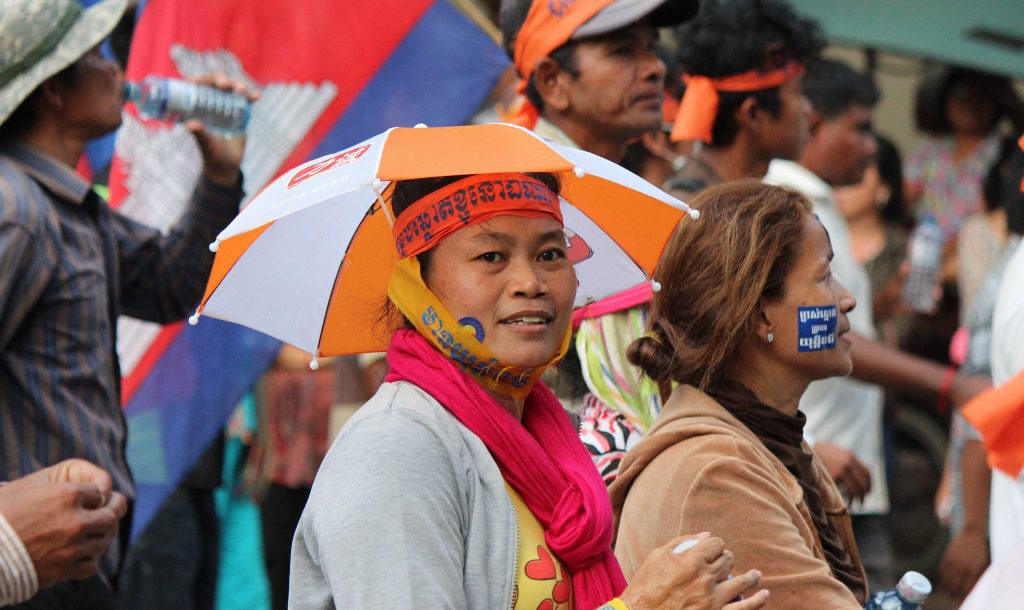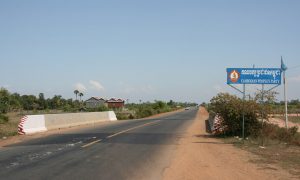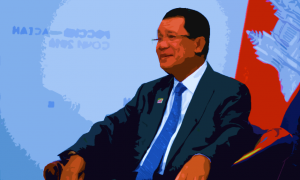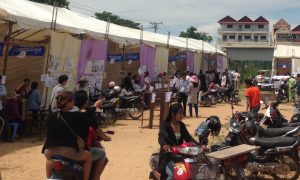On 16 November, Cambodia’s supreme court confirmed what for many had been a foregone conclusion when it dissolved the opposition Cambodian National Rescue Party over allegations that former leader Kem Sokha had conspired with foreign countries to overthrow the regime in a so-called colour revolution.
Amid heightened surveillance of opposition and civil society members and security around Phnom Penh to prevent protestors travelling to the city, the court announced that it would disband the party, redistribute its local commune chiefs and 55 National Assembly seats—mostly to the ruling Cambodian People’s Party (CPP)—and ban 118 of its senior leaders from politics for five years. The move effectively spells the end for the CNRP, which has been under increasing pressure since August 2017 amid a widespread crackdown on opposition in the country.
The dissolution of the CNRP clearly serves the interests of the ruling Cambodian People’s Party. The CNRP’s dramatic gains in the 2013 election shocked the CPP, which had grown complacent because of the opposition’s inability to unite in the years prior. Massive protests after the election further rocked the CPP, which had no plan in place to deal with an uprising and took months to agree on a forceful response. Repeated warnings in the last year against protests have, in their own way, shown just how worried the CPP is about an uprising, and its uncertainty about whether it could win a free and fair election in 2018.
But the destruction of the CNRP is also the result of a more fundamental turning point in Cambodian politics: the collapse of the Cambodian regime from a system that is relatively balanced at the elite level into a personalist dictatorship centred on Hun Sen. For much of its history, the CPP has been divided along factional lines, most notably between those loyal to Hun Sen and those loyal to Senate president Chea Sim. Chea Sim himself served as a moderating influence on the party, helping to resolve intra-party disputes and helping to maintain a unified front to outsiders. Although Chea Sim had lost influence in the decade before his death, his faction—which included former head of the armed forces Ke Kim Yan, Minister of Interior Sar Kheng, and Senate Vice-President Say Chhum—still helped to counter-balance Hun Sen’s ambitions. According to analysts I spoke to recently in Cambodia, however, following his death in June, 2015, his faction has fallen apart, removing the main limit on Hun Sen from within the CPP.
Seen in this context, the dissolution of the CNRP takes on new significance. Although Hun Sen had substantially increased his personal power within the government from at least 2005, until this week he has always been at least partly constrained by the need to placate or balance against competing centres of influence, including former King Sihanouk, the Chea Sim faction of the CPP, and more recently the CNRP’s popularity. But now, Hun Sen stands as the sole remaining centre of power in Cambodia.
Although dissolving the CNRP prevents any meaningful challenge at the ballot box next year, and removes the last major challenger for power, the move to outright personal dictatorship is a gamble for Hun Sen. Even though it may no longer exist as an organisation, the CNRP is widely popular in Cambodia. By closing off institutional possibilities for change, CNRP supporters may be encouraged to channel their frustrations through non-institutional means, whether that involves nonviolent protest or violent resistance. Pictures posted on social media over the last few weeks of ranks of troops dedicated to putting down popular uprisings and equipped with heavy weaponry imply that Hun Sen is well aware of this risk. Incentives for supporters to hide their true opinions as the CPP clamps down on opposition—what economist and political scientist Timur Kuran labels preference falsification—will also make these events far harder to predict and potentially more explosive.
Inside the CPP, too, Hun Sen’s consolidation of personal control may be a double edged sword. Researchers who specialise in authoritarian politics have found that moves to create personal autocracies often provoke internal coups d’état, as rivals within the group fear for their positions and safety if the dictator gains too much power at their expense. Even if the dictator is successful in fending off these challenges, the shift to personal autocracies creates grievances amongst sectors of the elite that miss out on the spoils of rule, particularly amongst those who are excluded from the ‘inner circle’. National University of Singapore’s Terence Lee has shown that these kinds of dictatorship are more vulnerable to popular uprisings, as mass protests create divisions within the ruling elite and increase the likelihood of security forces refusing to carry out orders to repress demonstrators. In comparison, more balanced regimes—such as that in Cambodia while Chea Sim’s faction remained strong—are more likely to remain unified, as fewer members of the political elite are willing to back regime change.
Considering this, what are the likely outcomes for Cambodia? First, political change through institutional channels now seems unlikely in the extreme. The CPP will almost certainly survive the 2018 election intact; with the CNRP gone, its major rival has been removed, and none of the smaller parties are yet capable of mounting a serious electoral challenge. Based on past patterns of repression, Hun Sen may open up political space again before or after the election, such as by pardoning Kem Sokha or allowing former CNRP members to compete in alternative parties, relying on the generally fragmented nature of Cambodia’s opposition to prevent them uniting again under a single banner. Yet the government has proven beyond all doubt that genuine competition will remain, as it has since the UNTAC era, absent from Cambodia.
At the same time, the disappearance of internal challengers and elimination of the CNRP may make non-institutional challenges to the regime increasingly likely. There are two routes through which these could take place. One is a coup launched by junior officers in the armed forces. Currently, Hun Sen loyalists dominate the upper ranks of the armed forces. This kind of control can lead to resentment at lower levels, as non-loyalists miss out on promotions and benefits due to political interference in the armed forces hierarchy. Indeed, it has been pointed out that Cambodia’s armed forces are beginning to look like the Armed Forces of the Philippines under Ferdinand Marcos in the 1980s, where favouritism and political interference played a major role in provoking the coup attempt that led to the EDSA revolution and Marcos’s downfall. Even in Hun Sen’s personal bodyguard force, most benefits go to senior officers, while ordinary soldiers live much harder lives. In the armed forces more generally as well, many of the lower ranked soldiers remain loyal to Ke Kim Yan, with a former government insider telling me that perhaps only 30% now genuinely support Hun Sen.
Another scenario is another mass uprising, like that seen in 2013. With winning elections off the table, opposition supporters may see this as the only realistic option for political change. Indeed, the 2013 protests in Phnom Penh were the biggest challenge to the CPP’s hold on power since the 1993 UNTAC election. While some responsibility for their failure may lie with strategic missteps by the CNRP leadership, the balance within the CPP also played a role in keeping the regime united in the face of the challenge. Now, however, with Hun Sen dominating the party to the exclusion of all others, a popular uprising would be far more likely to be effective in creating splits in the regime and gaining elite support for political change. As long as Cambodia continues posting economic growth, protests may not gather much momentum; however, a moral outrage on the regime’s part, or an economic shock which leads the labour unions to unite with the political opposition, would make such a possibility increasingly likely.
Hun Sen’s personalisation of power and elimination of the main opposition party seems likely to buy him time, preventing a serious challenge in next year’s election. But by removing constraints on his own actions within the CPP, as well as closing off institutional channels for popular dissatisfaction with his rule outside the party, he risks dramatically escalating political instability in years to come. Whatever the outcome, the middle way of political change through gradual reform is being closed off; Cambodia’s politics are likely to become increasingly volatile as a result.
 Facebook
Facebook  Twitter
Twitter  Soundcloud
Soundcloud  Youtube
Youtube  Rss
Rss 


